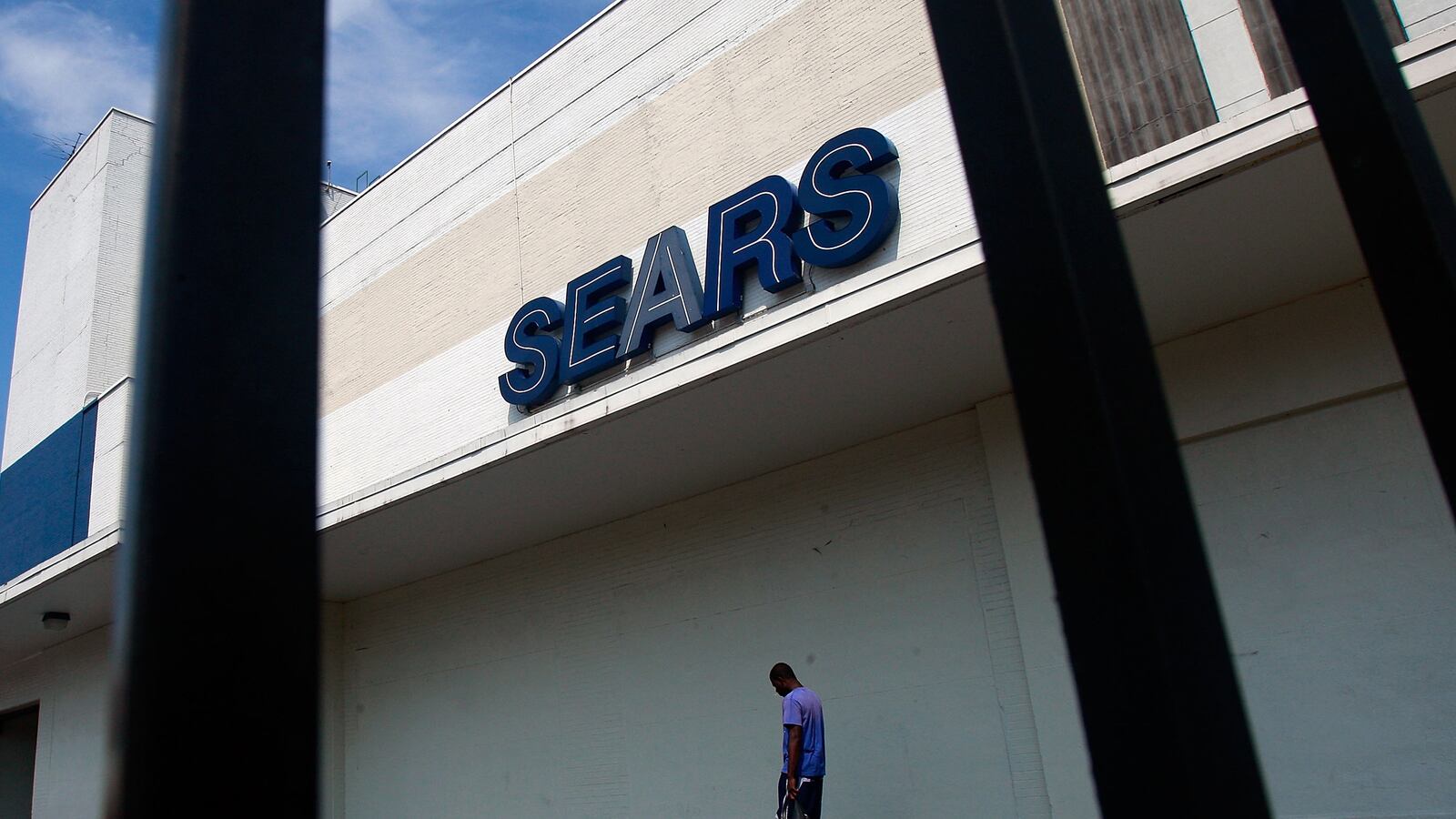And you thought JCPenney had problems?
Sears Holdings, which runs Sears and K-Mart, has reported yet another dismal quarter. The company posted losses of $1.46 a share on revenue of $8.87 billion. Overall sales were off 6.3 percent from the year-before quarter.
Sears Holdings is run by the reclusive hedge-fund billionaire Edward Lampert. His reputation was so polished a financial genius that when he got his hands on the already struggling retailers in 2004 and lashed them together, Wall Street applauded and the stock performed accordingly.
But it turned out that Lampert didn’t have many great ideas on how to turn around the tired retailing concepts of Sears and K-Mart. Instead, sales fell year after year. Strategies shifted rapidly and fickle Wall Street grew tired of the wounded “nobody gets me” routine. As seen in the chart, the stock, once above 100 a share, is now below 40.
The one consistent strategy on the part of Lampert has been stock buybacks (rather than investments in stores). Given the consistent decline in the value of the shares, the strategy of buying your own stock—rather than paying dividends or buying in other companies—has been a loser. The continuing slide of Sears and K-Mart into retailing irrelevancy has resulted in a significant reversal of fortune—and reputation. The man who once talked himself out of a kidnapping has been unceremoniously dubbed the worst CEO of the year and made lists like “The Five CEO’s Who Should Already Have Been Fired.”
For years, investors held out hope that Lampert had a secret plan for reversing the fate of middle- and lower-market big-box retailing. Financial engineering might liberate new sources of capital. If all else failed, perhaps the company could be a real-estate play. Perhaps his efforts to run the company as a corporate version of The Hunger Games would bring out the best in managers.
But investors have been perpetually disappointed. On Thursday, before the NASDAQ mercifully got shut down by a technology glitch, the stock of Sears was off 8 percent, putting the stock below 40, and at the same level it was in the spring of 2004.
The lack of turnaround at Sears is yet another example of the flaws inherent in the genius-hedge-fund-guy-will-make-it-all-better strategy. Exhibit B, of course, is Bill Ackman, whose expensive effort to remake JCPenney in his own image has ended in tears.







